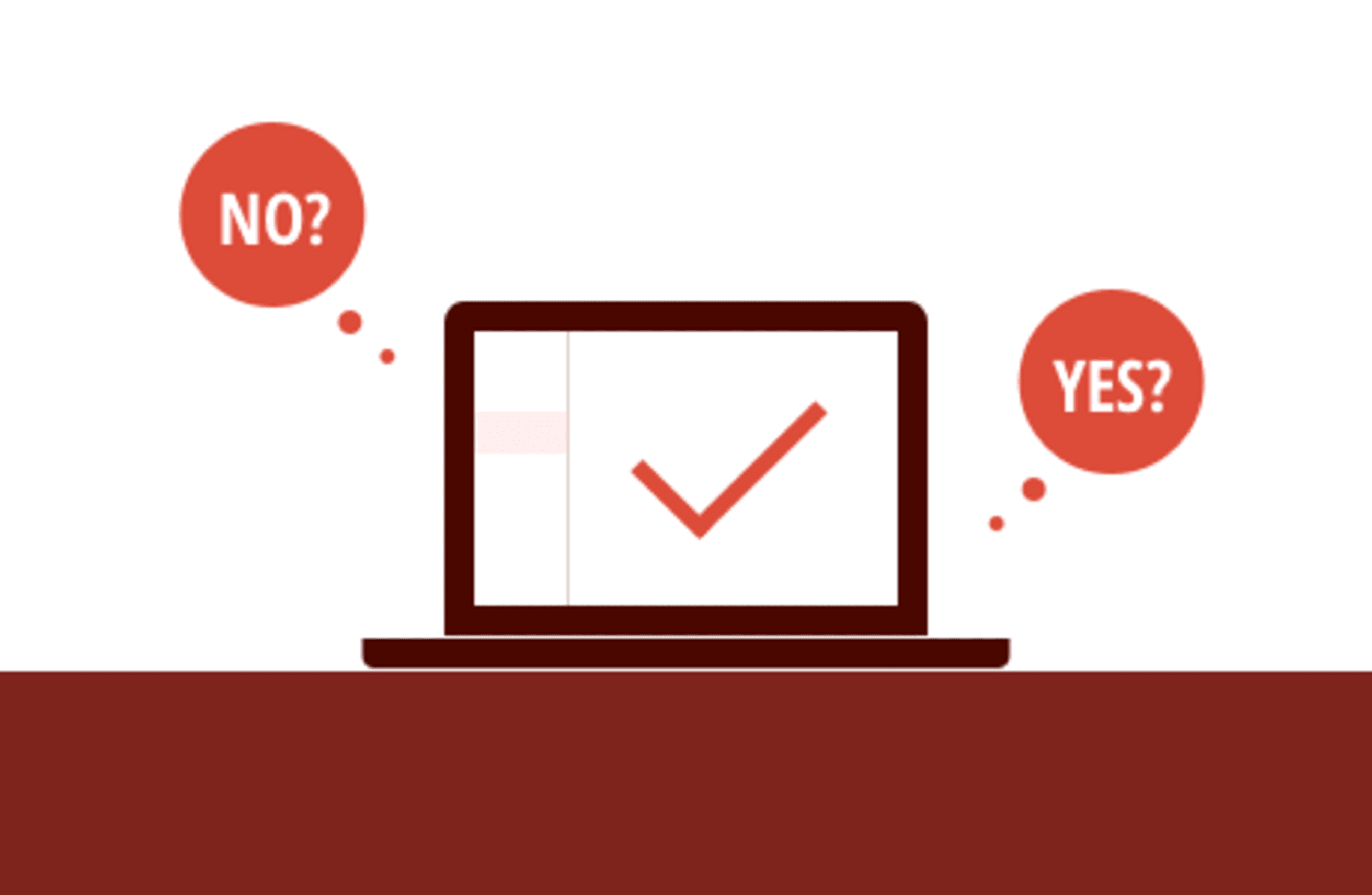Within productivity circles, "inbox zero" can spark as fierce a debate as Apple vs. Microsoft, Coke vs. Pepsi, Yankees vs. Red Sox, Michigan vs. Ohio State, DC vs. Marvel… well, you get the point. In this article, we’ll go over the pros and cons of inbox zero, and why it causes such passionate emotion. But before we get started, let’s first establish what inbox zero is and isn’t and why we need to talk about this in the first place.
We're buried in email
So email happened. While at first those little virtual envelopes sparked feelings of curiosity and excitement, those days are long gone. They’ve been replaced with dread and anxiety. That’s not surprising, since we’re currently emailing at a rate of approximately 200 billion emails… per day! I’m not even going to try to calculate how many that is per year.
Will the real 'inbox zero' please stand up?
The term and philosophy of inbox zero was originally coined by Merlin Mann, the founder and writer of 43 Folders, a blog about "finding the time and attention to do your best creative work." Contrary to popular belief, the “zero" doesn’t refer to fanatically keeping your inbox empty at all times. Instead, it refers to “the amount of time an employee’s brain is in his inbox.”
How to accomplish that? Here are some core pillars of Mann’s original view of inbox zero:
- Keep your email program closed for most of the day.
- Follow the principle of delete, delegate, respond, defer or do when processing mail.
- Always respond immediately to messages which can be answered in two minutes or less (this is a rule borrowed from David Allen's popular "Getting Things Done" (GTD) productivity philosophy).
To inbox zero or not to inbox zero?
Some people swear by these rules, while others passionately feel this isn’t a good idea at all. To find out why, I posed this simple question to a variety of busy professionals:
Do you subscribe to the inbox zero approach? Why or why not?
We got a wide range of answers. Some hate it, others love it, and then there are those who find the idea appealing in theory but can’t quite make it work in practice.
The aspirant

Taco Anema, founder of QWIC
Taco Anema, founder of Dutch electric bicycle company QWIC, belongs to the latter group. The inbox zero approach appeals to him on paper; an empty mailbox at the end of each day equals a clear head and being home on time for dinner. But in reality he doesn’t find the time to make it to the bottom of his inbox on a daily basis.
The faithful

Sara Rosso, VIP Global Services Manager at Automattic
Perhaps Anema could take a cue from Sara Rosso, VIP Global Services Manager at Automattic (WordPress.com). She warms to the inbox zero concept for the similar reason of getting rid of that “nagging” feeling of unread mails. Sara does make it work though, by using a set of mail filters to pre-sort incoming mail and batch process them. The ones that are left then get the GTD treatment of quick response, file away to action, or just archive.
Her advice if you can’t make it work?
“I think this concept is hard for some people to embrace, and it leaves them with a messy inbox,” she says. “Not all messages are meant to be answered, or are worth your time. Clicking on delete / unsubscribe / archive took some getting used to at first. Before I would just tell myself I'll reply later, but I wouldn't. Now I'm more honest, and just do that action immediately.”

Ruben Timmerman, Springest
This is textbook inbox zero, following the core principles described by Mann. Ruben Timmerman of Springest does this too, in order to force himself to that empty mailbox and therefore be more conscious of his choices (as opposed to just letting things sit there and being reactive).
“I have made some Zapier automations that enable me to tag mails that I cannot process in 2 minutes and try to clean my inbox at least every other day,” explains Timmerman.
The rebel

Darren Tome, VP of Product at Mashable
You won't find Darren Tome, VP of Product at Mashable, going that route, though. He loses the overview when conversations are out of his sight: “I'm not the most efficient at email,” he says, “[so] I definitely don't subscribe to the inbox zero philosophy. For some reason, archiving email and removing it from my inbox to me means I don't need to pay attention to it any more.”
Because some of the email threads he’s on continue over days, removing them from his inbox makes it harder to maintain the wider view of those conversations. Keeping them around, he says, serves as a reminder of which threads are still active.
The pragmatist

Piers Steel, University of Calgary
Piers Steel, PhD, one of the world’s leading experts on motivation and procrastination at the University of Calgary, has a similar approach, but for different reasons: “I like the idea, but I still need a place to store the messages. I’ve tried a good filing structure, but invariably things get mis-sorted and you forget where you put stuff.”
Steel finds that even when sorting and archiving mail, he was still relying on his mail provider’s search function to find what he was looking for. Since search works equally well wherever the email itself is located, why spend time sorting mail into folders? In the end, he ends up searching for older mails no matter how he has treated them.
“I still keep a few dedicated files for bills and correspondences for classes,” he concedes, and does archive mail older than two years. “For everything else, I just leave it in my inbox (which is at about 11,000 right now).”
The pro

Rodolphe Dutel, Remotive.io & Buffer
Rodolphe Dutel of Remotive.io and Buffer does prefer to go all the way. Like Sara and Ruben, he follows the original inbox zero concept, but adds some additional tricks to make sure he doesn’t get distracted by incoming mails constantly: “I don't have email notifications enabled on my phone and only go ahead and refresh my inbox manually. Another thing I do is use Inbox Pause to make sure I don't get any incoming email while treating those that are currently pending.”
The overlord

Oliver Bulloss, Executive Producer at Rovio
If you think this is rigorous, meet Oliver Bulloss, Executive Producer at Rovio, the company that brought us the infamous Angry Birds video game. He defends his inbox like a medieval castle: “I do subscribe to a rough inbox zero approach by reducing the amount of email that exists, making organizing it easier and also using email labels, in combination with a rigorous list of filter rules. With these I am able to cut off most unnecessary email before I ever see it and make sure that if an email gets to my inbox, it’s probably important enough to need a reply. I then tend to write my longer email replies first thing in the morning, just after lunch or at the very end of the day.”
The realists

Caleb Oller, co-founder of Motel
Caleb Oller, co-founder of web development firm Motel, is a bit stuck in the middle on applying inbox zero. “I try to,” he says. “I never have more than 10 items hanging around in my inbox, but I ‘later’ a lot of stuff that I get to on weekends and/or evenings.”
Email is the most important communication tool for him to support his team and engage with clients, so he needs to stay on top of it. Yet it isn’t always the most important thing he could be spending his time on. He applies a video game analogy to his feelings on email: “I often feel like email is that Level 1-10 grind I have to labor through before I can move on to bigger, more exciting bosses. Until I've processed my email I can't write code, I can't work on proposals, I can't support my team.”
Caleb does have a special trick up his sleeve for managing his mail: “If you haven't used Outlook for iOS, stop what you're doing and download it. It's the best product Microsoft has put out since Windows XP. It has all the great triage features of Mailbox combined with an incredibly robust search.”
Which leaves me.

Tim Metz, co-founder of Saent
As co-founder of Saent, a product to help people be less distracted and get more productive, I naturally aim to not get distracted by email all the time. This means only checking mail a few times per day and being very focused on dealing with messages when I do spend time in my mailbox.
I also believe an empty inbox ensures matters have been dealt with and nothing slips through the cracks. In reality, I reach that state only once every other week though. As Caleb said earlier; there are simply more important things to work on besides mail, and obsessing over getting to a cleared inbox every day would cost too much time.
Five tips for getting your inbox to zero
Hearing others talk about their inbox zero strategies is one thing, implementing it into your own daily workflow is quite another. To help you on your way, here are five take-aways from the people we talked to.
- Close your mail program. Leaving your email application open at all times is a recipe for disaster. The pull of those little envelopes is irresistible and they will constantly distract you from other work that needs to get done. Only open your mail a few times per day, then make sure to close it again so you can focus on more important tasks.
- Set up mail filters. It pays to take a bit of time to create filters for recurring communication. Redirect newsletters to a “read” folder, mark mails addressed to you as more important than those on which you’re just cc'ed, assign priority to specific senders — there are tons of rules you can setup in a matter of minutes that will save you hours over the course of months.
- Keep it simple. While letting all mail sit in your inbox might not work for everyone, there’s no need to create a super complex folder structure. You’ll spend more time filing and archiving everything than the time you’ll spend searching. Just keep a simple system with perhaps a few main folders and you should be golden.
- Don’t touch twice. Once opened, process the mail. Delete, delegate, respond, defer or do. Letting it sit there without taking any action ensures double work. You’ll have to reread it at a later stage and will again be faced with taking a decision on it. This is one reason why avoiding mail on mobile is not a bad idea; you often end up reading and processing the same mails again when you get to your computer.
- Beware of Zero-obsession. The purpose of inbox zero is to clear your head and make sure there’s no feeling of anxiety about unread emails slipping through the cracks. It’s easy though to get obsessed with seeing the bottom of your mailbox by the end of every single day. This creates anxiety about not reaching zero, which defies the purpose of applying inbox zero in the first place. Don’t get obsessed; it’s ok if you get to zero once a week or so.
How are you taming the email beast? If you need a hand, we suggest checking out this guide from the team at HubSpot on how to reach Inbox Zero.
So what about you? Do you often see the bottom of your mailbox? Or do you rather let it sit there and search for the right stuff when needed? We’d love to hear your approach in the comments below!

